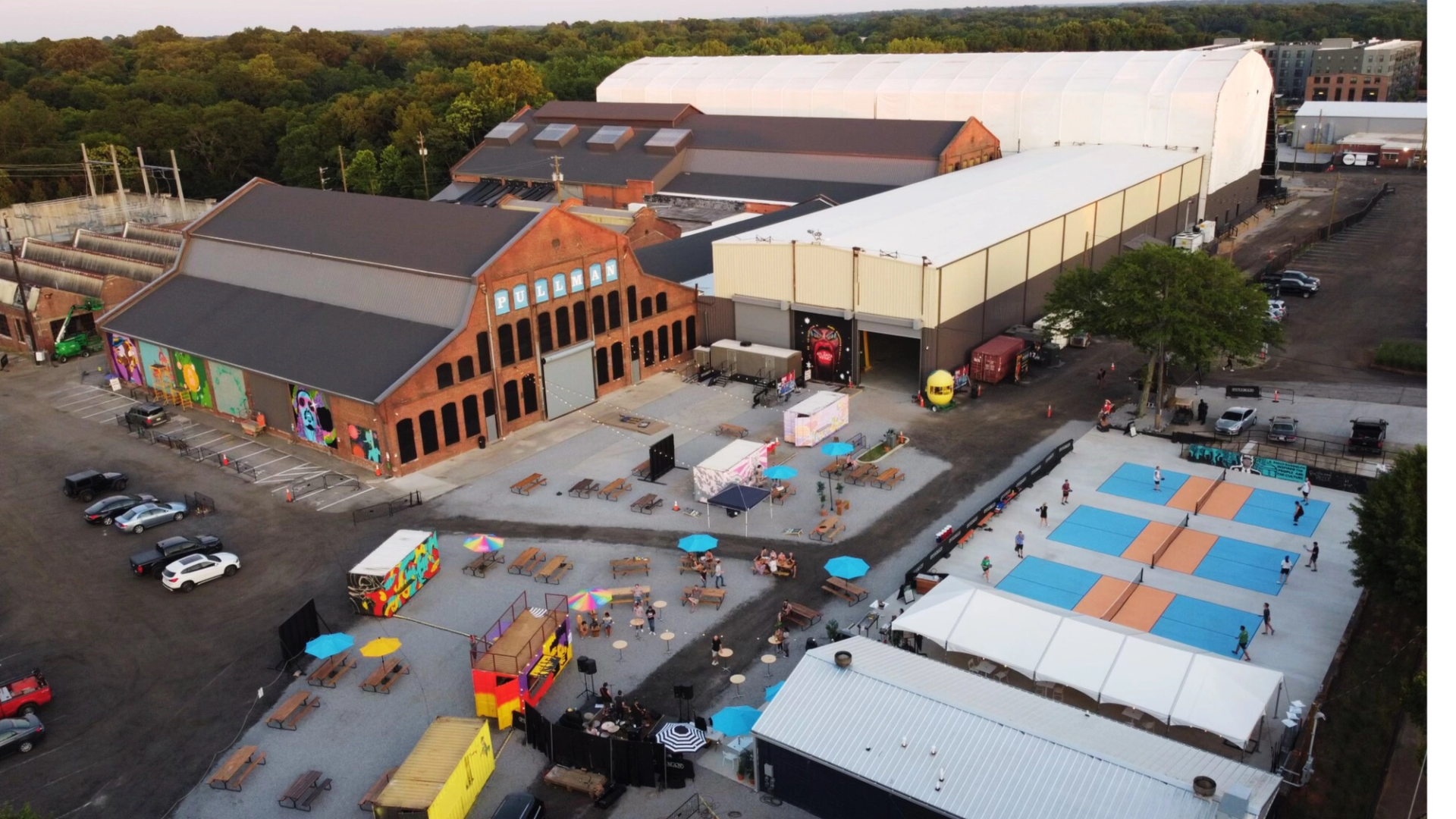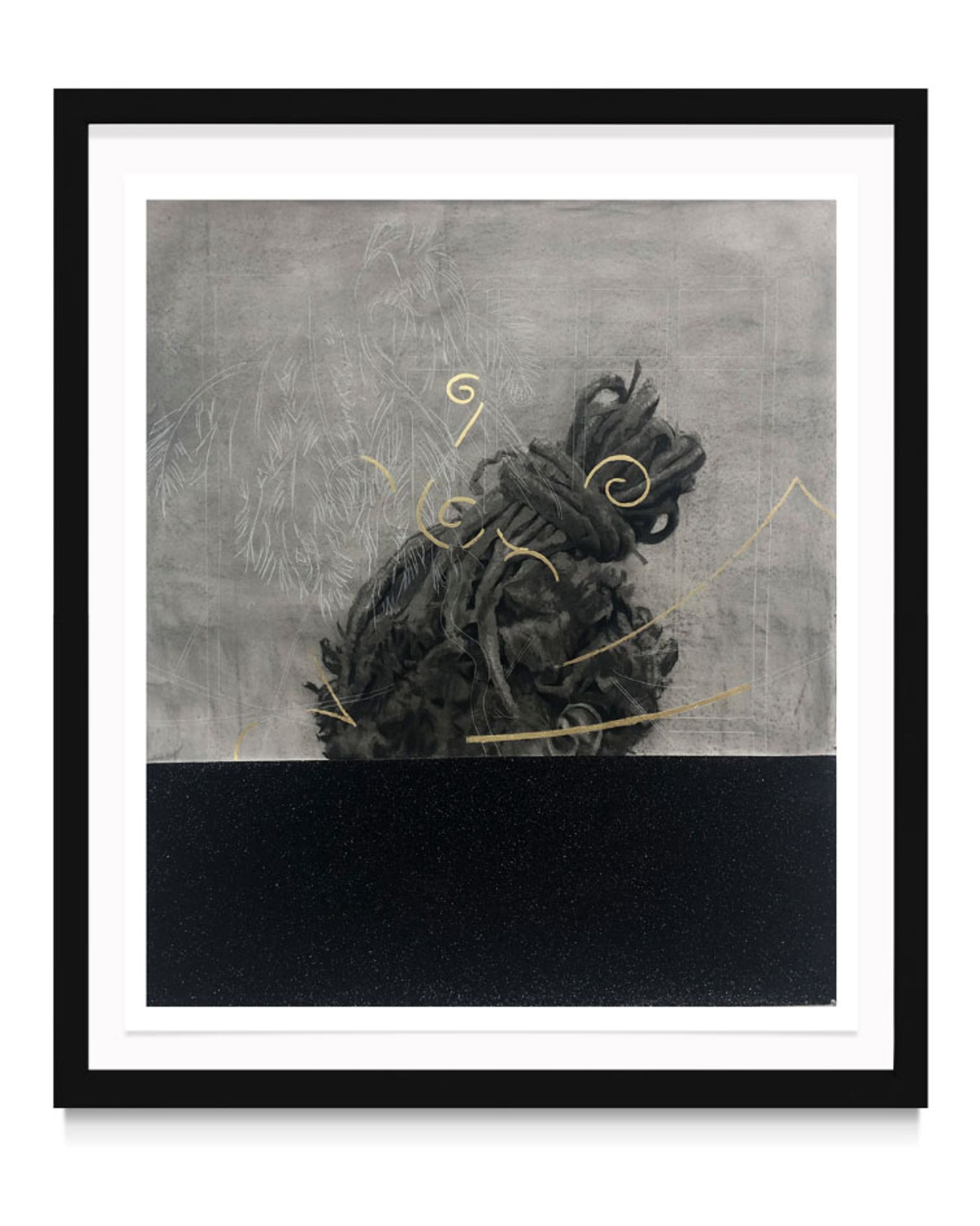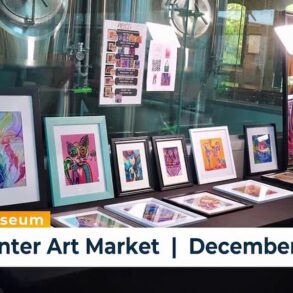The Atlanta Art Fair (3-6 October) is the first major commercial fair to take place in the city. It’s the latest signal that the art world has set its sights on Atlanta as an important destination. Local collectors, artists and dealers say national recognition for Atlanta’s art scene has been a long time coming.
The Atlanta Art Fair is being put on by New York-based Art Market Productions (AMP)—a division of marketing agency a21—which creates medium-sized art fairs across the US, with editions in Seattle, San Francisco and previously the Hamptons. AMP’s New York-based fair director Kelly Freeman has been travelling to Atlanta for two years to organise the fair.
“Talking to the local galleries and curators, the thing that always keeps coming up is this sense of community, like ‘Atlanta is in this together’,” Freeman says. “We need to make sure that we’re supporting each other, developing this next generation of collectors and teaching people what’s available in Atlanta … the one thing that I can offer is this centralised platform.”
The inaugural fair will host around 60 galleries, about 25% of which are local to the Atlanta area, though dealers are travelling from as far as South Korea to get in on the action. It comes at a crucial time for Atlanta’s art market, as the city’s population surges and the art scene gets more and more national attention.

The fair will be held in east Atlanta at Pullman Yards, a former sugar processing plant that has been redeveloped into an event venue , along with filming studios and restaurants
Courtesy Pullman Yards
Busy week in Atlanta
Taking place concurrently is the third edition of the Atlanta Art Week (AAW, 30 September-6 October), which brings together commercial galleries, museums and other spaces to spotlight the local scene. Dealers and advisors credit the organisation, founded in 2022 by art advisor Kendra Walker, for helping to centralise Atlanta’s art scene and bring the city into focus to garner more national attention. This year’s AAW will host an MFA show for students at two Georgia universities alongside programming at local galleries, museums and a specially curated show. For the first time in the event’s history, AAW will have participants from outside Atlanta, including Ochi Gallery from Idaho, Mariane Ibrahim from Chicago and the New York photography non-profit Aperture.
“It’s incredibly gratifying to see the growing excitement around Atlanta Art Week and to be a driving force in the city’s evolving contemporary art scene,” Walker said in a statement.
While AAW and the Atlanta Art Fair will take place in the same city the same week, there is no sign of collaboration between the two events. A spokesperson for AAW indicated in an email to The Art Newspaper there is concern within the organisation about being “overshadowed” in media reports by the Atlanta Art Fair. Walker, who founded AAW in 2022, did not respond to requests for an interview.
“We weren’t able to do as much collaboration as I’d hoped for. We really admire Atlanta Art Week. I think that Kendra and her team have done such a beautiful job,” Freeman says. “The goal was to be a centralised gathering space that AAW could take advantage of as they wanted to, and that’s something that we can grow into over the years.”
All three local Atlanta galleries taking part in AAW—Jackson Fine Art, Spalding Nix and Whitespace—will also have stands at the fair.
“If we work all together and look at the opportunities, and try to work not against each other but support one another, then it’s all a success,” says Anna Walker Skillman, the owner of Jackson Fine Art, which has helped turn Atlanta into a destination for photography. “I’ve seen how art fairs have changed other cities, and how important it is to have new markets and to create relationships.”
Donovan Johnson, the director of Atlanta’s Johnson Lowe Gallery, sits on the Atlanta Art Fair’s advisory board and said that while there’s some trepidation in Atlanta about the fair, most people are looking forward to seeing how it goes.
“This came from the outside, so whenever something like that happens in a city that hasn’t necessarily experienced that before, there’s always going to be suspicion and curiosity,” he says. “The general kind of opinion of the fair is, ‘Okay, what is this going to be like?’ Because it’s something new, but I think it’s excitement people are feeling.”

Shanequa Gay’s gateway to the south (2024)
Courtesy Jackson Fine Art
A changing city
Shelli Beermann, an Atlanta-based art advisor, said some of the city’s strengths are how young and open the city’s art galleries and institutions are, even to outsiders.
“Because Atlanta is an emerging art market, there are a lot of young people doing important things here—not just gallery owners, but also the artists and the collectors,” Beermann says. “The price points are fairly accessible, and walking into a gallery is an easy and pleasant experience. There are dealers who are willing to speak with you. There’s not a lot of intimidation in the market here. It’s very welcoming and very open.”
Atlanta has kept that charm, locals say, even amid a major population boom. The city has seen an influx of new residents since the onset of the Covid-19 pandemic. Since 2020, the Atlanta area has jumped from the country’s ninth most populated metropolitan region to the sixth most populated with 6.3 million residents, according to US Census estimates released in March. Atlanta has long been a hub for Black culture in particular, and though the 2020 census data showed the city lost its African American majority for the first time in four decades, it is still the largest ethnic group in Atlanta.
“To get Atlanta on the map, from an art perspective, would be a huge boon to the city,” Beermann says. “Atlanta has a lot of culture already, in terms of there being a huge community around music and sports teams, and to include art as part of the overall Atlanta experience would be a great benefit.”
Atlanta’s art scene has for decades supported strong DIY galleries and benefitted from local universities and the city’s museums and other cultural institutions, Johnson said. There is a sense in Atlanta’s art scene that the city’s creative history has long been under-recognised, he adds.
“The excitement going on in the Atlanta arts community has always been happening here. This is not new,” Johnson says, acknowledging that large events like AAW and the Atlanta Art Fair have helped focus attention on the city’s cultural community. “I appreciate how they’ve been able to draw in the press (to cover) what is already happening in Atlanta,” he says. “But something that is never spoken about is the artists who have been living and working in Atlanta for decades, who have always been a part of the conversation, both locally, and now regionally and nationally.”

Skylarking (2022) by Cosmo Whyte
Courtesy Johnson Lowe Gallery
Creatives like the multi-disciplinary artist Cosmo Whyte, the photographer Myra Greene and the painter Gerald Lovell were able to “make names for themselves beyond the boundaries of Atlanta … by cultivating relationships that started from within the community”, Johnson says. “Those things aren’t really spoken about in the same way that some of these larger initiatives are.”
What Atlanta needs, according to Johnson, is to “bridge the gap” between the city’s homegrown creative talent and elements of the commercial art trade that make it possible for art and artists to flourish. The fair could be an opportunity to showcase what Atlanta has to offer, dealers say, and at a critical time: Atlanta’s cost of living and real estate are relatively affordable compared to art hubs like New York or Los Angeles, but galleries in the city are still feeling the squeeze amid an industry-wide softening of sales.
“The whole market is affected by this contraction, no matter where you are, ” Beermann says. “I’m seeing it across almost all of my clients, that everybody is seeing a dip in sales and a correction of the market. Some of that has to do with macro factors like rising interest rates, it being an election year, there’s recession talk—it is much harder these days, across the board, for collectors to part with their money and especially to put it into something like art.”








